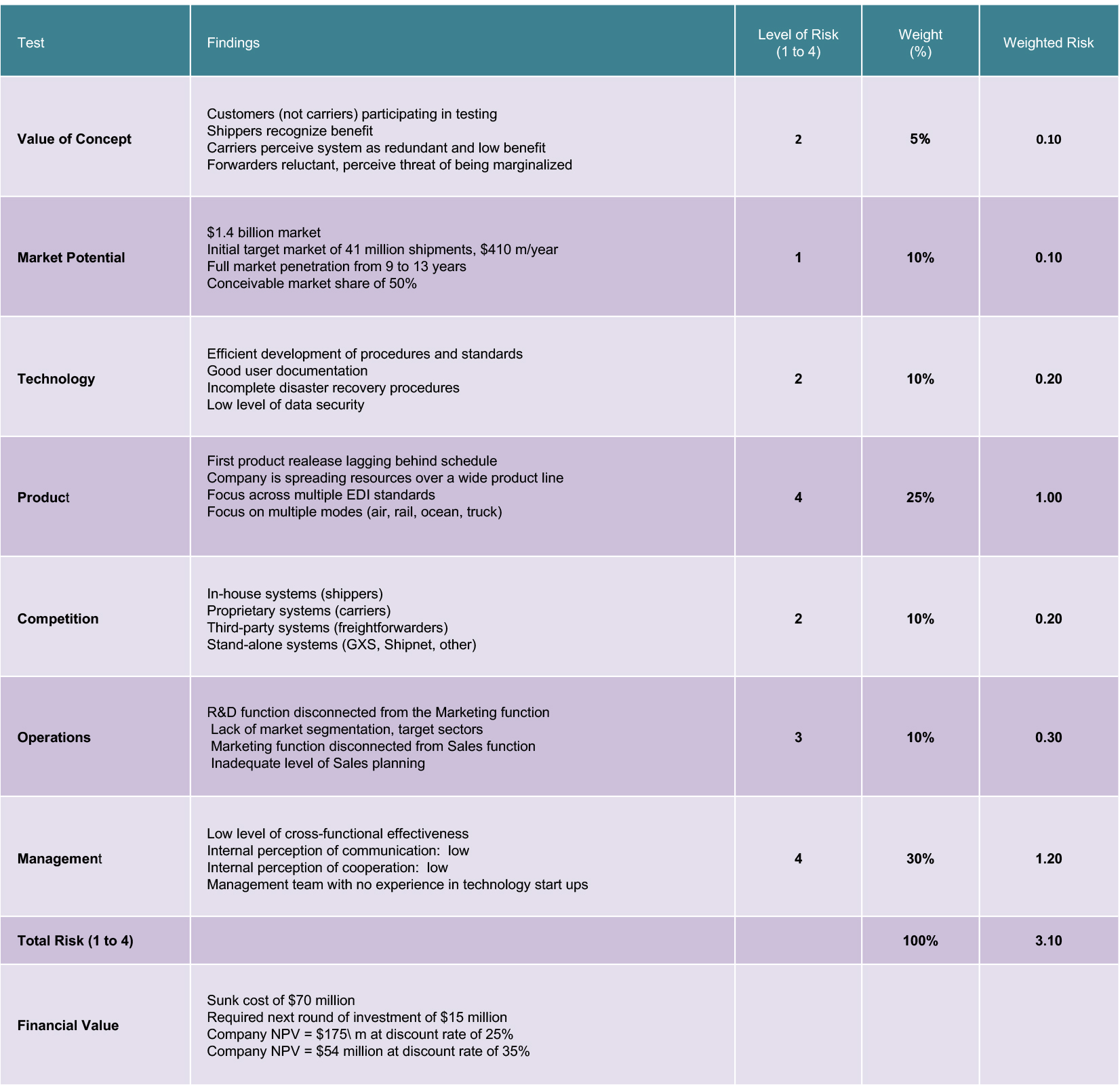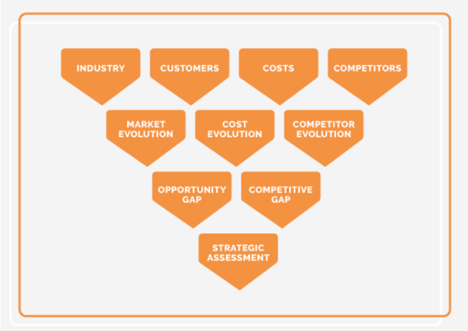Strategic due diligence in
A PE firm was looking to acquire a target company given its breakthrough technology. The technology consisted in EDI-based software for tracking and tracing cargo line items across air, ocean, and ground transportation worldwide. The target company was a corporate joint venture between a U.S. major airline and a U.S. national railroad company. The acquisition thesis was to grow the company and eventually conduct an IPO. The PE firm needed a strategic due diligence of the company prior to the acquisition.
Our determination was that the company was a high risk and worth approximately $68 million, well below the seller’s asking price of $160 million:
- The company had sunk cost of $70 million
- No product had been released so far, in its 4th year in operation.
- Products lagged severely behind schedule with the first release scheduled in the next year.
- The next round of investment called for $15 million.
- The management team lacked experience in technology start-ups.
- Large variance in NPV subject to the choice of risk premium factored in the discount rate, as follows
• $68 million at a discount rate of 15% and
• $156 million at a discount rate of 10%
FINDINGS

We conducted the following tests:
- Verified the perceived value by potential customers through 53 in-person interviews, including the following:
- – 31 shippers
- • 3 beta sites
- • 28 prospects across food products, beauty products, electronics, medical instruments, automotive components, and pharmaceuticals
- – 15 carriers
- • 10 ocean carriers
- • 5 global airlines
- – 7 freight forwarders
- Sized the potential market and the time required for penetration
- Examined the technology and its compatibility with potential users
- Determined product acceptance
- Analyzed the competition
- Assessed whether company operations were adequate in generating the required level of sales and customer support
- Evaluated the management team
Subject to the results of each test, we rated the specific level of risk and scored total risk.
We analyzed the cost structure of the business and the required investments.
We conducted a Discounted Cash Flow analysis.
We ran several sensitivity analyses at varying discount rates.


